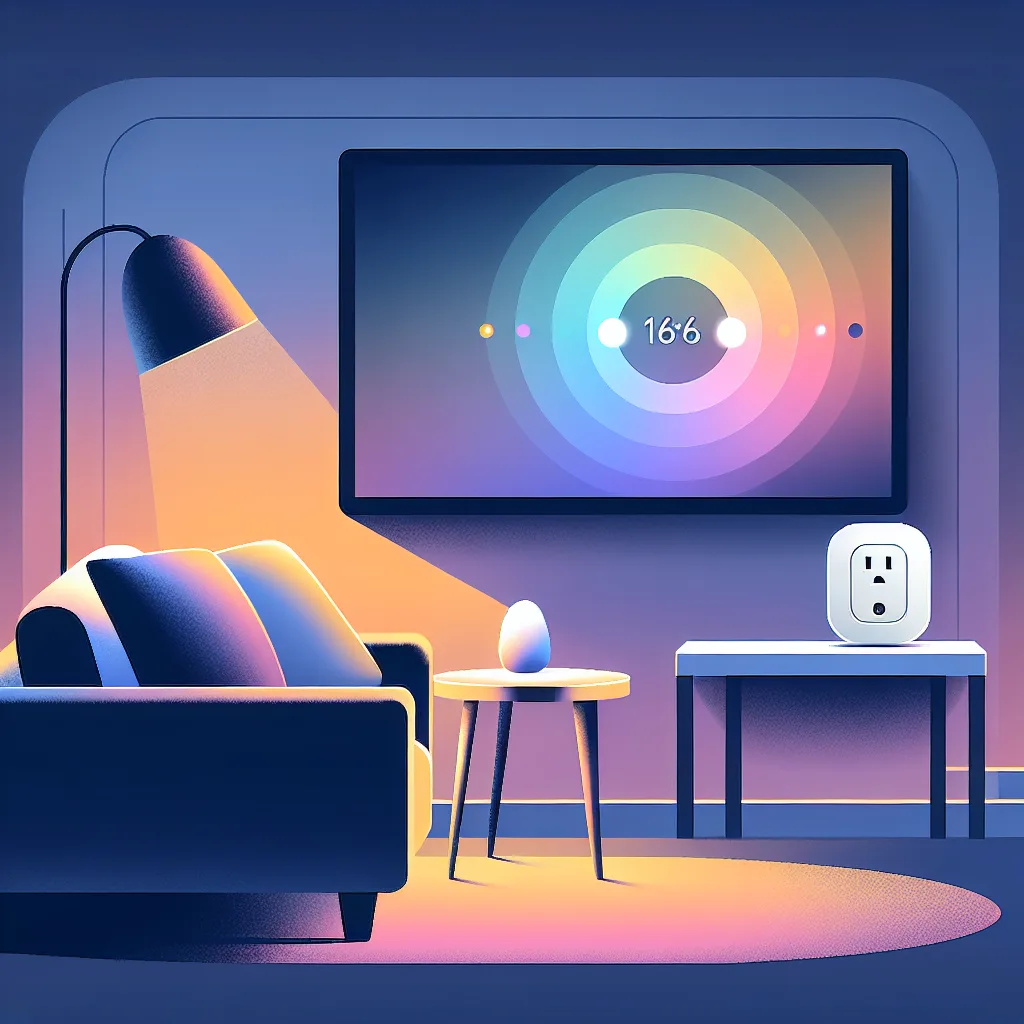Trying to automatically turn on your TV backlights with an Alexa routine? Here’s why it doesn’t work and a simple fix using a smart plug or a clever command.
So, you have a vision. It’s a simple one. You turn on your TV, and at that exact moment, the cool new LED backlights you just installed flare to life, bathing the wall in a soft, cinematic glow. It feels futuristic. It feels smart.
You grab your phone, open the Alexa app, and dive into the routines section. This should be easy, right?
When… My TV turns on.
Alexa will… Turn on the backlights.
But you hit a wall. A weirdly specific wall. You scroll through the list of triggers in the “When” section, and your TV is nowhere to be found. But you know Alexa can see your TV, because it’s right there in the “Alexa will” action list.
What gives?
If this sounds familiar, you’re not alone. I’ve been there myself, tapping through the app, feeling like I must be missing something obvious. The good news is you’re not missing anything. The bad news is, it’s a little more complicated than it seems. But don’t worry, there’s a great fix.
The Problem: Why Your TV Can’t Start a Routine
Here’s the simple-ish explanation: In the world of Alexa, devices are often either “controllers” or “the controlled.”
- Controllers are devices that can kick off an action. Think of an Echo Dot hearing a command, a motion sensor detecting movement, or a smart button being pressed. They send a signal to Alexa saying, “Hey, something just happened!” These are the things you can use as a “When” trigger.
- The Controlled are devices that just listen for commands. Your TV, in this case, is one of them. It can receive a command from Alexa to turn on, change the volume, or switch inputs. But it doesn’t send a signal back to Alexa saying, “Hey, just so you know, I’m on now!”
So, your TV is waiting for instructions, but it’s not designed to be the one giving them. That’s why you can tell it what to do, but you can’t use its status to trigger anything else.
So how do you get around it?
The Best Fix: The Smart Plug Workaround
The most reliable way to solve this is with a piece of gear you might already have: a smart plug with power monitoring.
It sounds technical, but the idea is simple. Instead of trying to see if the TV is on, you see if the TV is drawing power.
Here’s how it works:
- Get the Right Plug: You’ll need a smart plug that specifically mentions “power monitoring” or “energy monitoring.” Brands like Kasa, TP-Link, and Eve make popular versions. They’re not usually much more expensive than standard smart plugs.
- Plug It In: Plug your TV into the smart plug, and then plug the smart plug into the wall.
- Create Your New Routine: Now, go back to the Alexa app and build your routine again, but with a different trigger.
- When… This time, select your smart plug. You should see a new option for power detection. You can set it to trigger when the wattage goes above a certain threshold (say, 20 watts). This means the routine starts the moment your TV starts drawing power.
- Alexa will… Turn on the backlights.
That’s it. Now, whenever you turn on your TV with its regular remote, the smart plug detects the power draw and tells Alexa to fire up your lights. It’s the seamless, automatic experience you were looking for from the start.
The “No-New-Gear” Method: Rethink Your Command
What if you don’t want to buy another piece of tech? Fair enough. You can get almost the same effect by changing your habit just a little bit.
Instead of making the TV the trigger, make your voice the trigger for everything.
Create a new, custom routine that’s more of a “scene setter.” You could call it “Alexa, TV time” or “Alexa, movie night.”
Here’s what that routine would look like:
- When… You say “Alexa, TV time.”
- Alexa will…
- Turn on your TV.
- Turn on your TV backlights.
- (Optional) Dim your other living room lights to 30%.
- (Optional) Announce “Okay, enjoy the show.”
This method puts all the actions into one simple command. The only trade-off is that you have to remember to use the voice command instead of grabbing your old TV remote. But for a lot of people, this is a perfect solution that costs nothing extra.
So, while it’s a bummer that Alexa can’t natively use your TV as a trigger, these workarounds get the job done beautifully. Whether you opt for the clever smart plug trick or a streamlined voice command, you can still get that smart, connected feeling you were hoping for.
